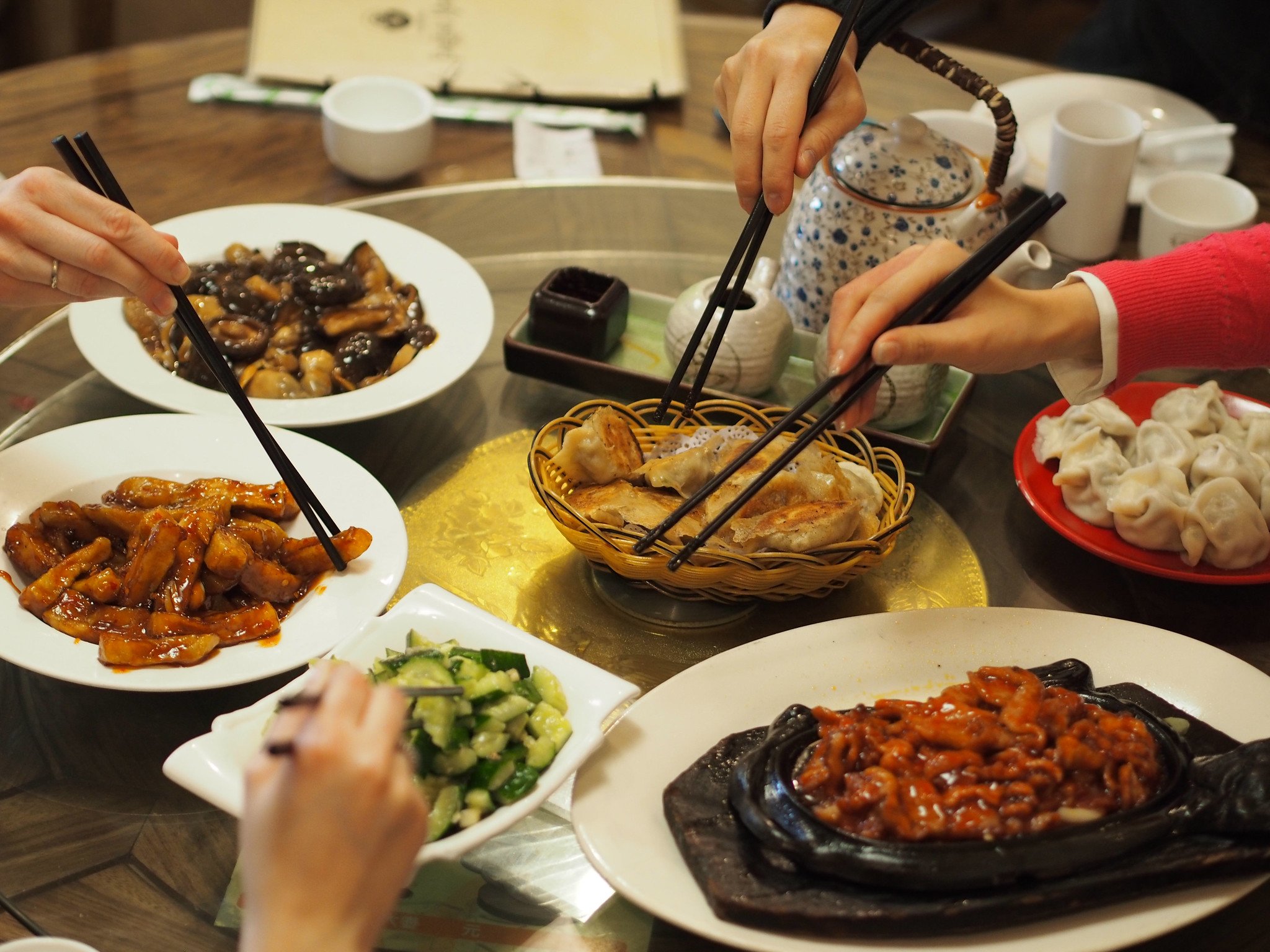How to eat in a real Chinese Restaurant (in 15 steps)
An unabridged version of this piece I recently wrote for Rough Guides.
You’ve heard the one about not sticking your chopsticks straight up in rice, right? (It resembles funerary incense sticks).
Honestly? Don’t fret. Because let’s face it; you’ve got bigger problems than antiquated cultural faux-pas. Like how to actually order and eat a table-full of awesome Chinese food in a regular, everyday, non-touristy Chinese restaurant. In China.
“Are you ready to order?”
…Is a question you pretty much never hear. After being shown a table, the server will usually give out just one menu and then wait. You pick it up. It’s beefier than a telephone directory. You start turning the pages. Still, the server waits. And waits. Your companions eye you, hungrily. GAH, THE PRESSURE!
DON’T PANIC.
Take your time. Restaurant staff expect to dawdle while you flick through the menu, choosing dishes as you go. Typically in China, one person – the host - orders (and pays) for everyone. Of course, it’s up to you how you split the bill, but giving just one person ordering duties (open to suggestions from the floor, naturally) is more efficient than everyone taking a turn, and makes foodie sense too, as you’ll see later.
Size is everything…
Even at a mom ‘n pop hole-in-the-wall, the menu might be doing a decent impression of an encyclopaedia. Restaurants in China pride themselves on the ability to make dozens, sometimes hundreds of dishes. The good news is chunky menus usually means nice big dish photos.
…so know your place (in the menu).
In a typical jia chang cai (everyday family-style) restaurant, menus start with the house specials (often the fancy banquet dishes like whole seafood or Peking duck), followed by cold salad dishes, meaty mains, stir-fried vegetables, soups, and at the back, staples like noodles, rice, steamed bread, dumplings and desserts.
What if there are no photos or English?
A trick this writer used to roll out before he learned the necessary Chinese was to whisk the server on a whirlwind tour of the dining room, pointing at tasty-looking dishes on other tables, and smiling manically. It usually turned out OK. (Or just see below).
Get to know some everyday dishes.
Chinese eaters often disregard the menu and simply shout out common dishes that all restaurants know how to cook. Try these tasty (and foreigner-friendly) standards: tudou si (shredded potatoes with vinegar), xihongshi chao jidan (stir-fried tomatoes and eggs), gongbao jiding (diced chicken with peanuts and dried chilis), and pai huanggua (a cold salad of cucumber and garlic).
How much (and what) to order.
A good rule of thumb is to order one dish per number of diners, plus soup and rice. (This is why dining in big groups is more fun – you can munch more and the cost per person is lower). The concept of starters, mains and desserts doesn’t apply, so order everything at once. For a table of six, plump for a couple of cold salad dishes, three to five hot ‘mains’, a vegetable, soup, and rice or noodles.
Master the art of balance.
Part of the reason one person assumes ordering responsibilities is because a successful Chinese meal is the art of balance and harmony on the table: hot and cold, yin and yang, colour, nutrition, complimentary tastes and textures. That’s the theory, anyway. Or just get a fist-full of grilled lamb skewers and ice-cold beer and to hell with it.
Wait… Yin and yang?
According to traditional Chinese medicine, yin and yang refers to how different foods generate hot or cold energy in the body. Cucumber is yin, or cold, for example, while chili peppers are yang, or hot. Make sense? Well this won’t: lobster is yang and crab is yin. Let’s call the whole thing off.
How to eat (the basics).
Dishes are served in the middle of the table for diners to attack ‘family-style’; only rice is served individually. It’s not Thanksgiving so no need for mom to dish it up. Besides, that would look ridiculous on the tiny plates they give you.
Just keep grazing away at those central dishes until you can graze no more.
Chopsticks.
In high-end joints and at formal banquets, you’ll have two sets – one to transfer food from the communal dishes to your bowl or plate, and one to eat with. But mostly you’ll just get one set. They are your friends. Treat them well. (And avoid those wasteful disposable ones).
Seasonings.
If a dish is too salty, eat a little of it over your plain rice to balance the seasoning. (This is generally how to eat, anyway). You’ll usually get dark vinegar and chilli oil on the table to add a sour or spicy note (often to noodle soups). Pro tip: the two link up to make a zingy dipping sauce for steamed or fried dumplings.
The bill, please.
When you’re ready to settle up, don’t be shy; it’s a fairly common practice to raise your voice to get the server’s attention. “Fuwu yuan” (waiter / waitress) is heard every few minutes in local eateries in and around Beijing. And you might be pleased to know that, outside of hotels, tipping isn’t part of the culture.
Lastly… eat early (ish).
Aim to eat a little earlier than you might be used to. Many Chinese diners sit down to eat at around 6pm, and its not uncommon for restaurants to be winding down by 9pm. But if you you do miss last orders, it’s not the end of the world - there’s probably a 24-hour McDonald’s around the corner.
Writer’s note: This listicle has an admittedly northern China bias (me being based in Beijing), and with a food culture as deliciously epic and diverse as China, it’s barely the tip of the iceberg. But you’ve got to start somewhere, right?



